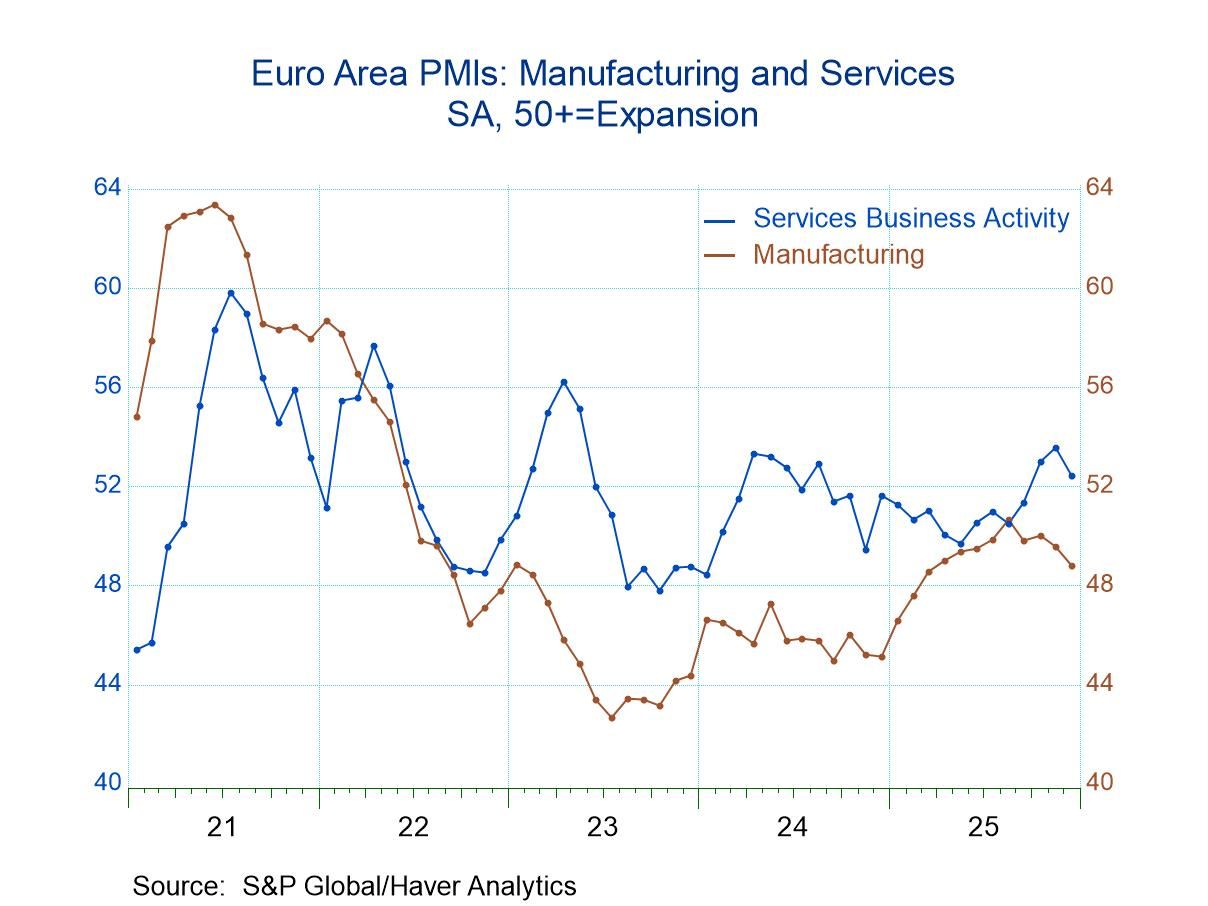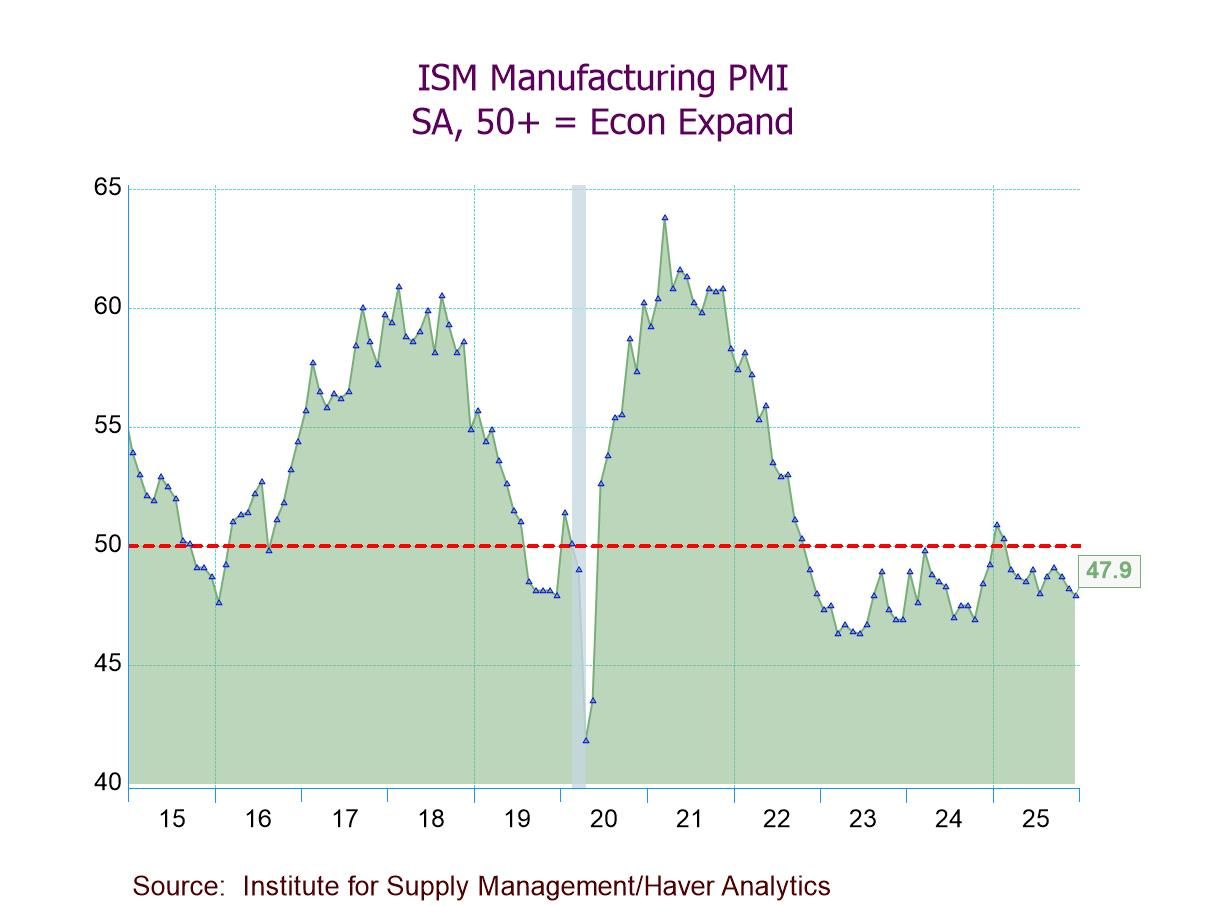U.S. ISM Manufacturing PMI Remained in Contraction Territory in September
by:Sandy Batten
|in:Economy in Brief
Summary
- The headline index was below the boom-bust 50 level for sixth consecutive month.
- New orders and production indexes increased but remained below 50.
- The employment index fell to further below 50.


The ISM Purchasing Managers Index of activity in the manufacturing sector was unchanged at 47.2 in September. This was the sixth consecutive month that the index has remained below the critical 50 level that separates expansion from contraction, an ongoing indication of the adverse impact of tight monetary policy on the manufacturing sector. A small increase to 47.5 in September had been expected by the Action Economics Forecast Survey.
The performance of the component indexes was mixed though generally weak in September. Both the new orders and the production indexes increased in September but remained below the critical 50 level. New orders rose to 46.1 from 44.6 while production increased to 49.8 in September, its highest reading in four months, from 44.8. The employment index weakened to 43.9 from 46.0. Eight percent of respondents increased employment in September, down from 10% in August, while 22.7% reduced employment in September, the highest reading since May 2022. Supplier delivery times slowed in September for the third consecutive month and inventories fell.
The prices index, which is not part of the composite series, fell to 48.3 (NSA) in September, its lowest reading since December 2023, from 54.0 in August. Nearly 13% of respondents reported lower price prices in September, down sharply from 21.4% in August while 16.4% reported lower prices, up from 13.4% in August. Export orders fell to 45.3 in September, the lowest reading since January.
At the industry level, the five manufacturing industries reporting growth in September were: Petroleum & Coal Products; Food, Beverage & Tobacco Products; Textile Mills; Furniture & Related Products; and Miscellaneous Manufacturing. The 13 industries reporting contraction in September were: Printing & Related Support Activities; Plastics & Rubber Products; Wood Products; Apparel, Leather & Allied Products; Primary Metals; Transportation Equipment; Nonmetallic Mineral Products; Electrical Equipment, Appliances & Components; Paper Products; Machinery; Chemical Products; Fabricated Metal Products; and Computer & Electronic Products.
The ISM figures are based on responses from over 400 purchasing executives from 18 industries, which are weighted according to each industry’s contribution to GDP. These indexes are diffusion indexes where a reading above 50 indicates expansion and a reading below 50 points to contraction. The figures from the Institute for Supply Management can be found in Haver’s USECON database; further detail is found in the SURVEYS database. The expectations number is available in Haver’s AS1REPNA database.


Sandy Batten
AuthorMore in Author Profile »Sandy Batten has more than 30 years of experience analyzing industrial economies and financial markets and a wide range of experience across the financial services sector, government, and academia. Before joining Haver Analytics, Sandy was a Vice President and Senior Economist at Citibank; Senior Credit Market Analyst at CDC Investment Management, Managing Director at Bear Stearns, and Executive Director at JPMorgan. In 2008, Sandy was named the most accurate US forecaster by the National Association for Business Economics. He is a member of the New York Forecasters Club, NABE, and the American Economic Association. Prior to his time in the financial services sector, Sandy was a Research Officer at the Federal Reserve Bank of St. Louis, Senior Staff Economist on the President’s Council of Economic Advisors, Deputy Assistant Secretary for Economic Policy at the US Treasury, and Economist at the International Monetary Fund. Sandy has taught economics at St. Louis University, Denison University, and Muskingun College. He has published numerous peer-reviewed articles in a wide range of academic publications. He has a B.A. in economics from the University of Richmond and a M.A. and Ph.D. in economics from The Ohio State University.




 Global
Global

